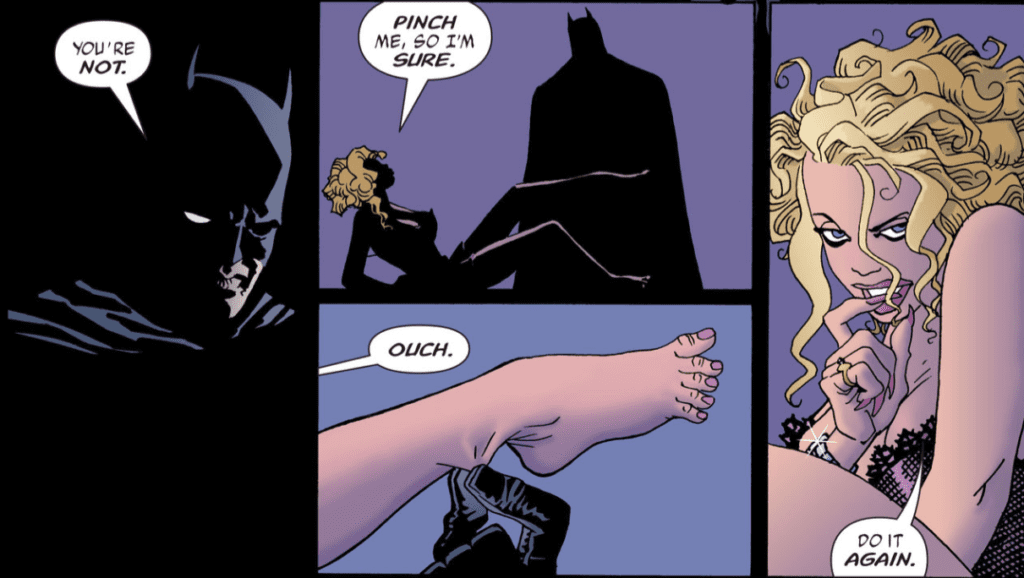Back in 2004, the team behind the award-winning Vertigo series, 100 Bullets put their noir spin on the Caped Crusader in the five-part Batman: Broken City.
Following the 12-issue, Bat-Epic Batman: Hush – Brian Azzarello and Eduardo Risso teamed up with colorist Patricia Mulvihill and letterer Clem Robins to tell a more grounded tale in Batman #620-625. Instead of having a huge cast, the team kept it centered in Gotham. As great as Batman is in teams and world-ending threats, the team took him back to his small roots. Solving the case of the murdered Elizabeth Lupo, Batman focuses more on his detective skills. Batman: Broken City (hereafter Broken City) uses Azzarello’s and Risso’s noir background to dramatic effect.

BROKEN CITY MURDER MYSTERY
Broken City begins with Batman investigating a murder by questioning Killer Croc. From there, Batman follows a constant trail of crumbs to figure out who killed Elizabeth Lupo. But, Gotham never sleeps, nor does violence. During his chase with Lupo’s brother Angel Lupo, the suspect kills a mother and father out with their son, mirroring the murder of the Waynes. This senseless killing furthers his reasons for figuring out what all is transpiring. Nonetheless, Broken City is full of tales of broken people in a broken Gotham.
This darkness is where Azzarello’s writing knocks it out of the park. Having an excellent noir resume, he can write Batman as a detective and not a hero who fights world-ending threats. Yes, we all may love Batman fighting Darkseid, but Batman works best in a contained ground-level story. Azzarello nails this by keeping the story tight, fast when needed, and no earth ending threat. Azzarello can write Batman as a detective that is hard-pressed to learn the truth. The plot itself unfolds amazingly, yet Batman’s characterization is the scene-stealer.
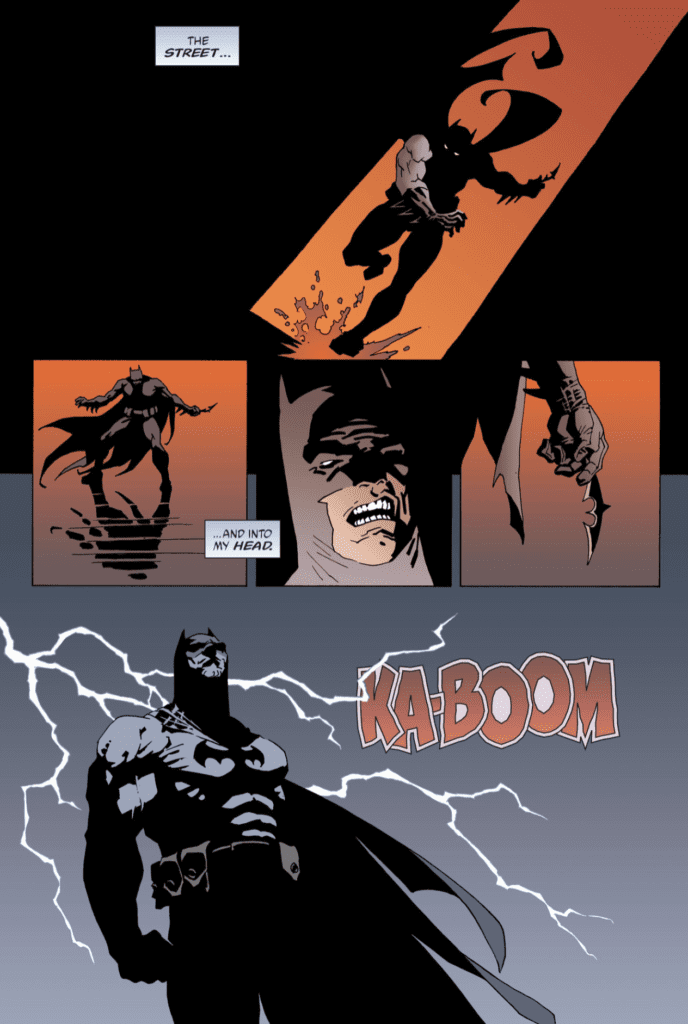
A BROKEN GOTHAM
Although Risso’s name has only been attached to a few Batman issues (usually teamed with Azzarello), his art matches Gotham perfectly. Risso’s style is rough in all the right places that give Batman, Gotham, and his rogues a certain charm. Nonetheless, that’s not the only significant aspect of Risso’s art. Risso can nail so many things that make Broken City interesting. At times he’ll show the gruesome violence in Gotham, yet other times he’ll hide it behind onamonapias and other objects. Another factor is fantastic pacing. During some scenes, Risso will have multiple small panels that slowly zoom in/out of character to help the pace, and set the mood.
But, one huge area that helps his art are the colors.

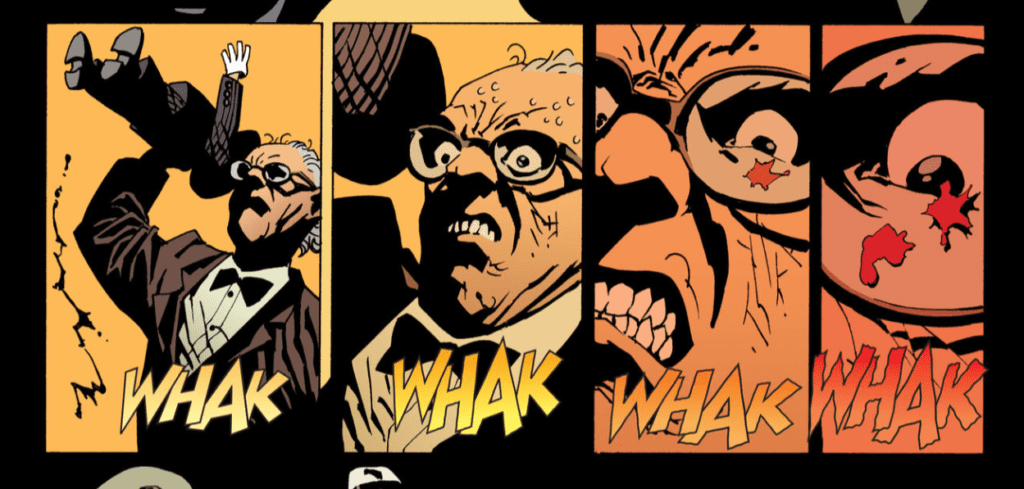
Mulvihill’s colors go hand in hand to Risso’s art. Funny enough, Mulvihill joined Azzarello and Risso for issues 15 through 100 of 100 Bullets. So, her teaming up with the duo makes absolute sense. Mulvihill’s colors can seamlessly change to benefit the tone. On one page, she can have a mix of darker greys for Gotham, and the bottom shades of light blue for Bruce’s house. Then on the next page at a strip club, her colors will change to bright and poppy. Yet, one of the more fascinating moments is when her colors and Risso’s art mirrors Sin City.
Sometimes Mulvihill will drop colors and either go with silhouettes or heavily draped in shadows. When these minimalist moments happen, they remind you of Sin City for all the best reasons. Batman is a creature of shadows, which the team thoroughly understands.

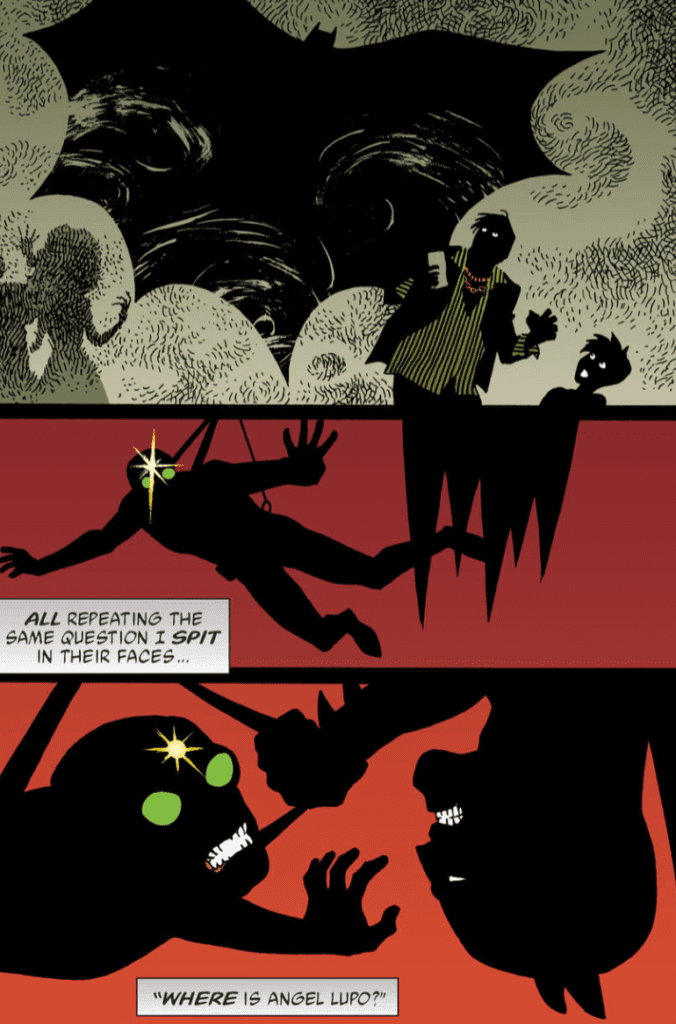
THE COLOR OF DEATH
Narration box colors may not be something you think about often, yet it’s an element that is quite important. After reading another Batman story recently, one thing that stood out was how badly the narration boxes colors did not match the theme or other colors. Luckily Robins lettering works wonders in Broken City. The narration boxes are a mix of grey and sometimes a lighter blue. These match the plot perfectly and never takes you out of reading.
A great example is down below. Robins’ narration box colors blend in, not too much, but just enough to where it doesn’t ruin the panel. But, compare that to the “CONTINUED” box that is bright yellow. It pops off the page and grabs your attention, instead of letting you take in the art and story.
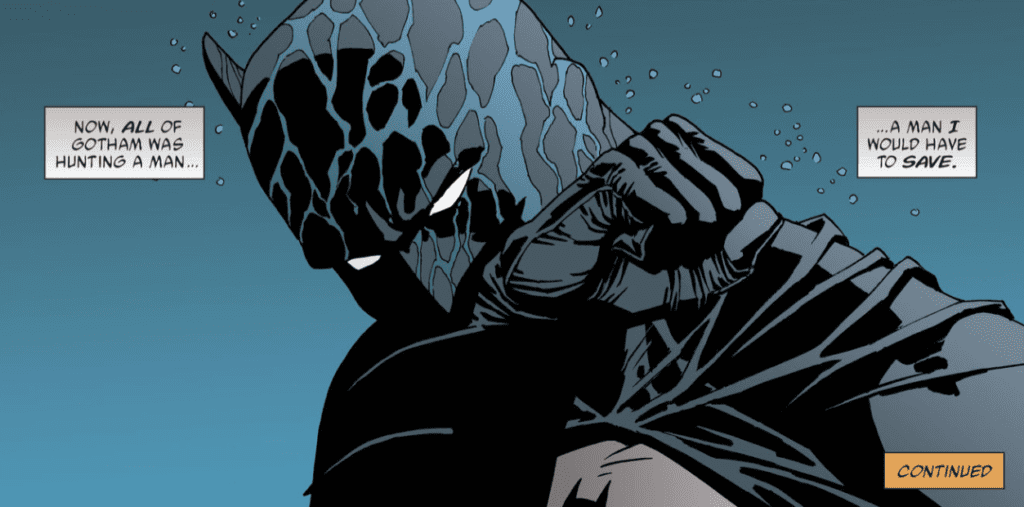
BROKEN CITY/ANOTHER DAY IN GOTHAM
Broken City is impressive not only for its noir setting, lingo, vibe, and art but the humor as well. Azzarello never forces humor but adds it in to help build up the story. Nonetheless, the team behind Broken City makes so much sense for a Batman story; it’s a tragedy they’ve only worked on a few in the past years. The fact that the team can craft such a great noir, small scale story that has a ton of readability is a feat. If you’re in the mood for a noir tale, give this storyline a chance, or any other comic the team has worked on.
We leave on an exchange that had me spit my coffee out.
